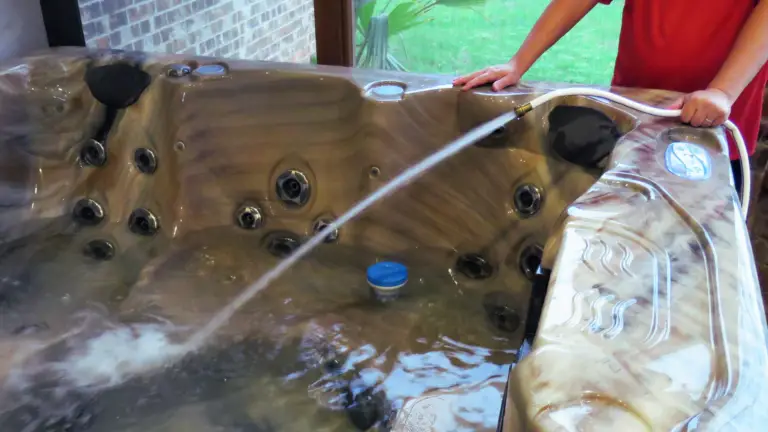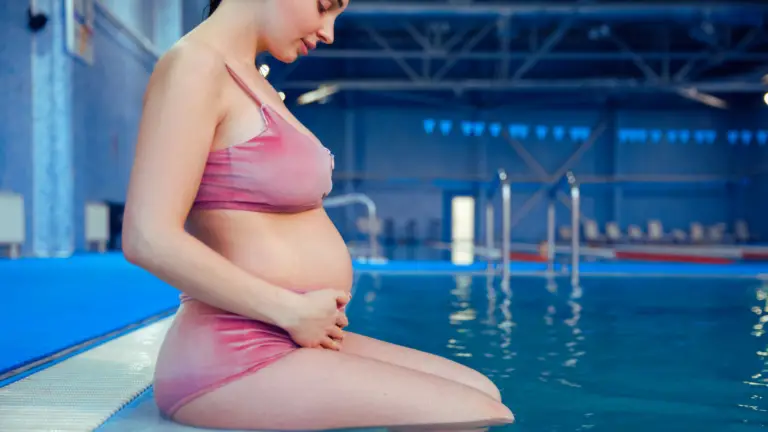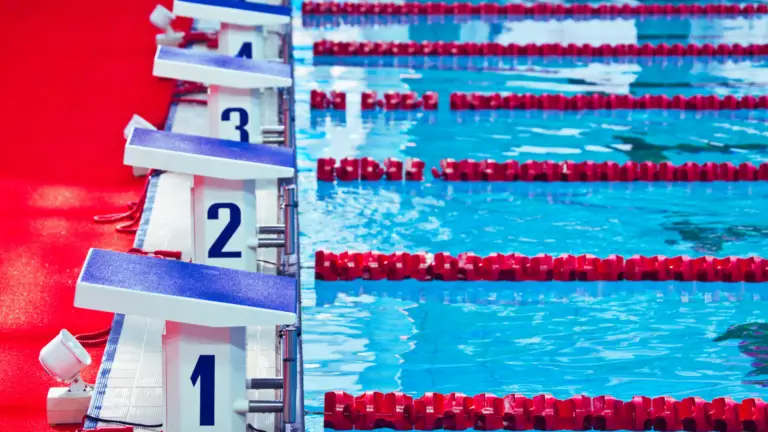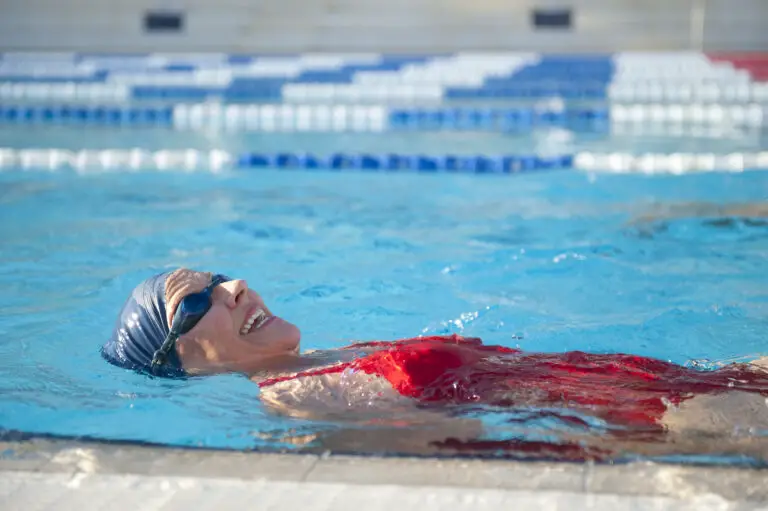
Swimming is a popular recreational activity that provides a range of physical, mental, and emotional benefits. However, if you wear contact lenses, you may face a dilemma while swimming. While contact lenses can provide clear vision on land, it’s a whole different story underwater. The potential risks of wearing contact lenses while swimming often raise concerns among swimmers.
This article explores the pros and cons of wearing contact lenses while swimming and provides tips for safe and comfortable swimming with contacts. With the right precautions and care, you can enjoy swimming without compromising your eye health or vision.
Swimming with Contacts: A Common Dilemma
As someone who wears contact lenses regularly, you are likely familiar with their benefits. Contacts offer a convenient way to see clearly without the hassle of glasses getting in the way during activities.
However, if you’re an avid swimmer, you may be concerned about wearing contacts in the water. After all, swimming pools can be filled with bacteria and other microorganisms that could cause infections or other eye issues. The American Optometric Association and the U.S. FDA recommend avoiding contact lenses while in the water.
So what’s a swimmer to do? Here are some things to consider.
The Risks Involved With Wearing Contact Lenses While Swimming

Let’s address one of the people’s main concerns regarding wearing contacts while swimming: what risks does it pose? In short, several potential dangers associated with this activity should be considered before deciding to take the plunge (pun intended). The first issue we mentioned is bacteria and microorganisms in pool water.
These can cause infections such as conjunctivitis (pink eye) or keratitis (an infection in the cornea). Bacteria thrive in moist environments, so your eyes are especially vulnerable when they trap moisture against the surface of your eye.
In addition to infection risks, swimming with contacts can lead to unpleasant symptoms such as irritation, redness, and dryness. Chlorine and other chemicals in pool water can strip away the natural lubrication in your eyes, leaving them feeling dry and uncomfortable.
This can be exacerbated when wearing contacts that further dehydrate your eyes. Overall, while it’s not impossible to wear contacts safely and comfortably, it’s essential to take these risks seriously and weigh them against the benefits of doing so before deciding.
The Dangers of Wearing Contact Lenses When Swimming
Swimming with your contact lenses may be tempting. However, doing so may pose various risks that can damage your eyes and cause discomfort.
One of the main concerns is eye infections. Water in pools, lakes, or oceans may contain bacteria, pathogens, and other microorganisms that can stick to your contacts and cause infections.
These infections can lead to redness, itchiness, pain, and, in severe cases, damage to your vision. Pseudomonas aeruginosa is one type of bacteria commonly found in water that can lead to an eye infection called acanthamoeba keratitis.
Moreover, water also affects the way contact lenses perform. Contacts are designed for use in air environments suspended above a cushion of moisture.
The laws of osmosis mean that if you put those same contact lenses underwater or expose them to a moist environment like rain or steam from a shower head, they will absorb moisture until swelling occurs. This changes their shape and causes them to adhere more closely to the eye surface. This means contacts worn while swimming are more likely to move around on the eye surface or even fall out entirely.
Water contains numerous chemicals which can irritate the eyes, leading to redness, dry eyes, and discomfort. Always protect yourself from all these risks by avoiding swimming with your contacts.
Alternatives to Wearing Contact Lenses While Swimming
Prescription Goggles: Clear Vision and Comfort
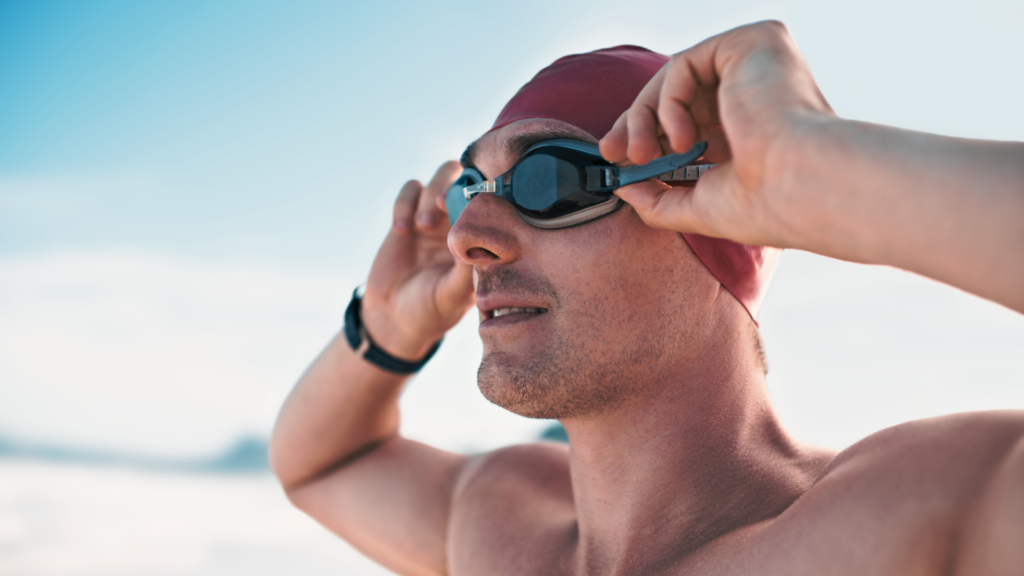
If you’re an avid swimmer who relies on contact lenses for clear vision, prescription goggles can be a game changer. These goggles can be made with your exact prescription, ensuring you’ll have clear vision both above and below the water. Prescription goggles come in various styles and colors, so you can select the one that fits your preferences best. For tips on proper goggle care, visit our post here.
They are also highly comfortable to wear, even for prolonged periods. One benefit of wearing goggles is the added convenience they provide.
You don’t need to worry about taking out contacts or risking losing them while jumping into the water. This makes it easy to transition from swimming to daily activities without fussing over contacts or glasses.
👀 Interested in considering prescription goggles? We’ve put together a comprehensive guide to the Top 5 Best Prescription Goggles for Swimming. Check it out!
Switching To Glasses Temporarily: A Simple Solution
Another alternative for swimmers is glasses worn temporarily during swim sessions instead of contact lenses. This option is handy if a swim session is short or infrequent, as switching between glasses and contacts daily may not be practical or cost-effective.
While it’s known that glasses can be cumbersome when engaging in physical activities such as swimming or running, some people may find them preferable to contact lenses. There are particular types of glasses designed specifically for water activities with features such as an elastic band around the headband area that secures them firmly on the face.
The Benefits Of Alternatives
Aside from relieving potential risks associated with wearing contact lenses during swimming activities, such as eye infections or discomfort caused by trapped chlorine under lens material, alternatives like prescription goggles and temporary use of eyeglasses offer extra benefits. Prescription swim goggles provide an ideal solution for those who require a high level of visual clarity during swimming activities and can be customized to fit individual requirements for a personalized fit.
Switching to glasses temporarily also provides a simple solution for those seeking added convenience or flexibility in their daily routine without needing prescription goggles. Regardless of which alternative is chosen, it’s essential to prioritize eye safety during swimming activities by taking steps such as avoiding exposure to contaminated water and maintaining proper hygiene.
Tips for Wearing Contact Lenses While Swimming
Minimizing Risks with Waterproof Drops and Tight-fitting Swim Goggles
If you have decided to wear your contact lenses while swimming, there are a few things you can do to reduce the risks of potential eye infections or irritation. Firstly, consider using waterproof drops before and after your swim. These can help to moisturize your eyes and reduce dryness that could lead to discomfort or infection. It’s essential to use drops specifically designed for use with contact lenses, so be sure to check the label before purchasing.
Another tip is to wear tight-fitting goggles over your contacts. This can help prevent water from getting into your eyes, reducing the risk of infection and making swimming more comfortable and enjoyable. Many brands offer goggles explicitly designed contact wearers, so look out for those if you want an extra layer of protection.
Proper Hygiene and Care for Contacts

You must follow proper hygiene practices, no matter how careful you are. Always wash your hands thoroughly with soap and water before touching your contacts or your eyes.
Use new disinfecting solutions every time you store them in their case, and avoid reusing old solutions. It’s also essential to replace your contact lenses as often as your optometrist or eye doctor recommends.
Over time, contacts can accumulate bacteria and other particles that increase the risk of infection or irritation. By sticking to a regular replacement schedule, you’ll be doing yourself a favor in protecting your eye health.
If using daily disposable contacts, discard them immediately after swimming, rinse your eye with rewetting drops, and pop in a fresh pair of lenses. This helps to eliminate the risk of exposing your eyes to harmful bacteria that may have attached to your contacts when swimming.
If you swim competitively, talk to your doctor about a special type of rigid gas-permeable contact lens that you wear at night to reshape your cornea.
The Bottom Line on Contact Lenses While Swimming
While certain risks are associated with wearing contact lenses while swimming, there are also ways to minimize those risks if you choose to go ahead. Ultimately it comes down to personal preference and comfort levels – some people may find it too uncomfortable or risky, while others may have no issues. Regardless of which camp you fall into, always prioritize your eye health and follow best practices for hygiene and care when handling your contacts.
Conclusion
To recap, wearing contact lenses while swimming poses potential risks and dangers to your eyes, according to American Optometric Association and the U.S. FDA. Water exposure can lead to irritation, infection, and lens damage. Alternatives like prescription goggles or temporary use of glasses are available. If you still choose to wear contacts while swimming, minimize risks by taking precautions. Prioritize your eye health over convenience or vanity. Additionally, proper care of your contacts is crucial, including regular cleaning and appropriate storage. With alternative options and proactive measures, you can safely enjoy swimming while protecting your precious eyes.
Overall, by being proactive and making informed decisions about how best to protect our eyes in different situations, we can continue enjoying our daily activities with confidence and peace of mind – even when it comes time for a dip in the pool!

